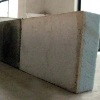- Sandwich Panels[10]
- Multifunctional Materials[2]
- Steel Wire Mesh[7]
- Tile Making Machinery[10]
- Plastic Cutting Machinery[1]
- Other Construction Material Making Machinery[10]
- Other Machinery[3]
- Building Material Making Machinery Parts[1]
- Ceiling Tiles[2]
- Decorative Films[1]
- Magnesium Oxide Boards[1]
- Other Fireproofing Materials[1]
- Cement Boards[1]
- Prefab Houses[5]
- Workshops & Plants[2]
- Villas[7]
- Contact Person : Mr. Zhang Michael
- Company Name : Shanghai Tengyi Uralite Building System Co., Ltd.
- Tel : 86-21-34553659
- Fax : 86-21-34553659
- Address : Shanghai,Shanghai,No.318 Rongchun Road, Langxia Town, Jinshan District
- Country/Region : China
- Zip : 201516
mgo board
mgo board
1 Product features :
As an environmentally friendly building material, magnesium oxide board has several attractive characteristics: fire resistance, moisture resistance, mold and mildew resistance, and strength derived from strong bonding between magnesium and oxygen in magnesium oxide (MgO; pronounced: em, gee, oh). Magnesium oxide boards are used in the place of the traditional gypsum drywall as wall and ceiling cover material or sheathing. It is also being used in a number of other construction applications such as: fascias, soffits, shaft-liner & area separation wall sheathing, and as tile backing (backer board) or substrates for coatings and insulated systems such as Direct-Applied Finish Systems, EIFS, and stucco.
MgO board for building construction is available is various sizes and thickness. It is a non-paper-covered material and generally light gray, white or beige in color. It comes in various grades, such as smooth finishes, rough textures, and utility grades.
2 Purpose and use
MgO is widely used primarily as wallboard alternative to conventional gypsum-based drywall. The MgO boards can be scored and snapped, sawed, drilled, and fastened to wood or steel framing. It can be used for interior or exterior applications. MgO boards are a good example of the advances made in construction materials to meet changes in building codes for safety and durability.3 Applications
Interior Wall and Ceiling Board Exterior Sheathing Trim Materials Fascias[2] Soffits Shaft-liner & area separation wall board Tile backing (backer board) and underlayment Substrates for coatings and insulated systems such as: Direct-Applied Finish Systems, EIFS, SIPS, Portland type Stucco and Synthetic Stuccos.4 Advantages
Ratings and testing: Fire-resistant (UL 055 and ASTM-Tested and A-Rated) Waterproof (Freeze/Thaw-Tested for 36 months) Mold/fungus/bug free (non-nutritious to mold, fungus, insects ASTM G-21) Impact-resistant (ASTM D-5628) NYC Approved (MEA # 359-02-M) Silica/asbestos free STC-Rated 53-54 Can be used in the place of traditional drywall or cement boards. No special tools required. Hard non-absorbent surface – no paper. Can be used in applications like cement-based siding. Available in colors. Environmentally friendly – It is removed from ore at about 25% of the temperature (400-800 °F) required to form CaO, the starting material for the preparation of slaked lime or portlandite used in common mortar and plaster. MgO boards have been mentioned in articles about the biologically friendly construction.5 Main feature comparision against plywood/OSB ,gypsum board and cement board .
| Attributes | Magnesium oxide board | Gypsum board | Plywood/OSB | Cement board |
| Fire resistance | Yes | No | No | Yes |
| Non combustible | ||||
| Water&Moisture resistance | Yes | No | No | Yes |
| Mold&Mildew Free | Yes | No | No | Yes |
| Nail | Yes | Yes | Yes | Yes |
| Cut/Saw-No special tools | Yes | Yes | Yes | No |
| Wallpaper over | Yes | No | No | No |
| Tile Backer | Yes | No | No | Yes |
| Sound&Thermal insulation | Yes | No | No | Yes |
| Eco-friendly&Non-toxic | Yes | No | No | No |
| Strong&Durable | Yes | No | Yes | Yes |
| Light weight | Yes | Yes | No | No |
| Recyclable | Yes | No | No | No |
6 Histories :
Magnesium oxide’s use in mostly masonry construction is ancient. It was used primarily as a mortar component and stabilizer for soil bricks. MgO has also been identified in the Great Wall of China and other ancient landmarks. Roman cement is reported to have contained high levels of MgO. In the West, Portland cement has replaced MgO for masonry uses. However, New York City’s Brooklyn Bridge base is made from locally mined cement, a mixture of calcium oxide and magnesium oxide commonly called Rosendale Natural Cement, the only natural non-fired cement made in the US. MgO boards were approved for construction use in the US around 2003. Due to its fire resistance and safety ratings, New York and New Jersey were early adopters of MgO board. Florida has adopted MgO for its mold/mildew resistance. It is hurricane and impact tested and approved in Miami-Dade County. Located in Taipei, Taiwan, Magnesium oxide can be found on all 101 stories of Taipei 101, currently the tallest building in the world. MgO sheeting was used on the inside and outside of all the walls, fireproofing beams and as the sub-floor sheathing. MgO sheeting was the “official” specified construction material of the 2008 World Olympics buildings in Beijing, a project costing over $160 billion.mgo board


